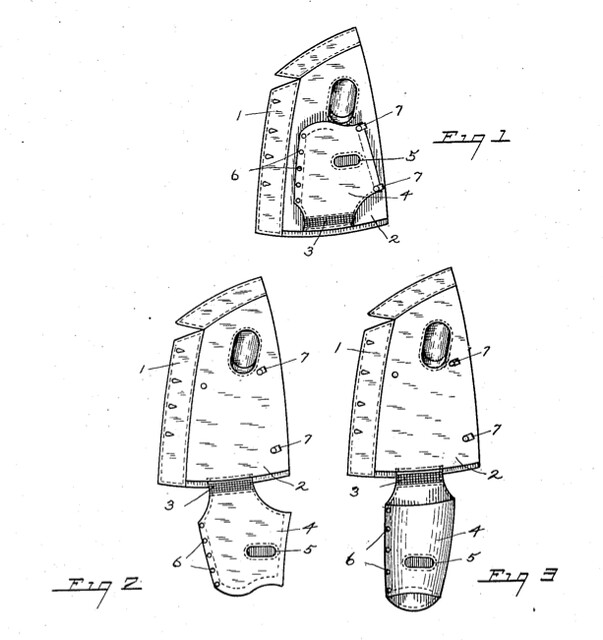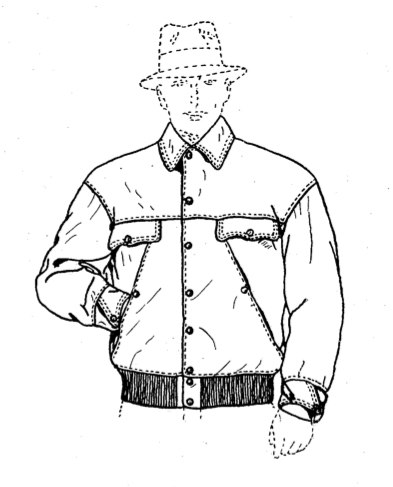zoomer
Well-Known Member
I recently found the old Poughkeepsie, NY, Eagle-News online here.
Poughkeepsie was the home of Werber Leather Coat Co. from about 1923-29, when they relocated to Beacon, a smaller town about 15 mi down the Hudson River. I'm in the early stages just yet, but have learned that Werber Coat (owned by Max Werber and his partner Louis Kramer) was a very troubled company during the depression days when they built government contract clothing, including A-2s and B-1/B-2 flight suits.
Fire was a constant hazard in leather shops. Max Werber had equipped the Beacon plant with sprinklers, but the water ruined garments and/or hides. (The latter were supplied to Werber by the government, something I wasn't aware of.) A small fire in 1933 was followed by a major one in 1934, which caused Werber to file for $20,000 in insurance claims. Fire inspectors discovered signs suggesting arson. Altho this could not be proven, the insurers balked at paying. Werber took them to court, lost the decision, appealed and won, then lost again. Litigation continued into 1938, about as far as I've researched. $20,000 was a huge loss then, amounting to about $300,000 in today's USD.
The National Recovery Act of 1933 was a New Deal program that set wage and hour codes for a wide variety of jobs. (The Supreme Court later found it unconstitutional.) Employers who did not meet the codes faced federal sanctions as well as strikes. In 1935, about a third of Werber's 90 workers walked out over piecework rates. Students from Vassar College joined the pickets. The strike, however, was unsuccessful despite state and federal negotiators intervening.
Something interesting emerged from the strike news: Werber had a government contract for black leather coats. I wonder who was issued them? Working with the black leather created a health hazard, as they gave off a sooty dust which sickened some workers.
Max Werber took out a US patent for at least one coat design, a 1929 jacket with slanting hand pockets. I'm trying to find it again and will post the drawing when I do.
Finally, all references I've found up to 1938 refer to Werber Leather Coat Co. of Beacon. As you may know, Werber moved to nearby Newburgh and reorganized as Werber Sportswear - the name on their 1939 and 1942 A-2 labels. This had to happen sometime after losing the insurance case, and I would think, very probably because of that case.
More to follow...
Poughkeepsie was the home of Werber Leather Coat Co. from about 1923-29, when they relocated to Beacon, a smaller town about 15 mi down the Hudson River. I'm in the early stages just yet, but have learned that Werber Coat (owned by Max Werber and his partner Louis Kramer) was a very troubled company during the depression days when they built government contract clothing, including A-2s and B-1/B-2 flight suits.
Fire was a constant hazard in leather shops. Max Werber had equipped the Beacon plant with sprinklers, but the water ruined garments and/or hides. (The latter were supplied to Werber by the government, something I wasn't aware of.) A small fire in 1933 was followed by a major one in 1934, which caused Werber to file for $20,000 in insurance claims. Fire inspectors discovered signs suggesting arson. Altho this could not be proven, the insurers balked at paying. Werber took them to court, lost the decision, appealed and won, then lost again. Litigation continued into 1938, about as far as I've researched. $20,000 was a huge loss then, amounting to about $300,000 in today's USD.
The National Recovery Act of 1933 was a New Deal program that set wage and hour codes for a wide variety of jobs. (The Supreme Court later found it unconstitutional.) Employers who did not meet the codes faced federal sanctions as well as strikes. In 1935, about a third of Werber's 90 workers walked out over piecework rates. Students from Vassar College joined the pickets. The strike, however, was unsuccessful despite state and federal negotiators intervening.
Something interesting emerged from the strike news: Werber had a government contract for black leather coats. I wonder who was issued them? Working with the black leather created a health hazard, as they gave off a sooty dust which sickened some workers.
Max Werber took out a US patent for at least one coat design, a 1929 jacket with slanting hand pockets. I'm trying to find it again and will post the drawing when I do.
Finally, all references I've found up to 1938 refer to Werber Leather Coat Co. of Beacon. As you may know, Werber moved to nearby Newburgh and reorganized as Werber Sportswear - the name on their 1939 and 1942 A-2 labels. This had to happen sometime after losing the insurance case, and I would think, very probably because of that case.
More to follow...






